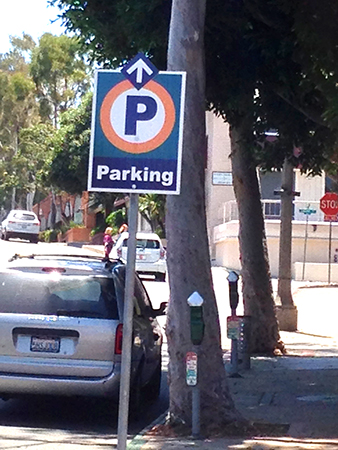
By Jennifer Erickson | LB Indy
Better promotion of peripheral parking lots supported by a strong trolley system prevented more cars from circulating downtown in Laguna Beach this summer, according to a city report.
While aspiring candidates espouse the strategy in campaign speeches, the current City Council has implemented it.
Preliminary data shows a dramatic increase in the number of motorists who took advantage of the two free lots at each of the city’s Coast Highway entry points – Mission Hospital Laguna Beach to the south and Pavilions to the north, while newly offered free weekend parking at Laguna College of Art & Design reached near-capacity levels from the start, the City Council learned in a report presented Tuesday. At the same time, trolley ridership rose 18.6 percent over last summer.
“I think the program was a huge success,” said Council member Toni Iseman, who is up for re-election in November. Despite the lifeguards reporting 5 million beach-goers and visitors crowding the hotels, restaurants and shops, “traffic was less,” she said.
The new parking strategies generated $1.9 million in revenue, $500,000 over last year’s take and 57 percent more than the $318,000 predicted increase.
Recommendations to reduce congestion downtown and along Laguna Canyon Road, culled from a parking management plan by Irvine-based RBF Consulting, were put to the test July 1 to Sept. 1.
The plan aimed to intercept more vehicles at the town’s periphery, Deputy City Manager Ben Siegel told the Council.
Strategies involved expanding capacity through added spaces at LCAD and valet parking; highly visible signage and robust marketing by Visit Laguna Beach; efficiency and service improvements that included smart meters, solar powered pay stations, and trained attendants in city lots, and demand-based pricing (higher at center, lower at periphery), Community Services Deputy Director Tom Toman reported.
Bringing 130 free weekend spaces in the LCAD parking lot into play this summer “exceeded staff’s expectations,” said Toman. Since the inability of standard trolleys to navigate the parking lot prevented use in the past, this summer the city employed mainline buses and small-scale trolleys to shuttle visitors to the ACT V lot where they could catch trolleys into town. As a result, the lot kept over 4,000 cars out of downtown.
A survey of the 19,000 occupants showed that 95 percent liked the arrangement and that 70 percent were headed to the art festivals, Toman said.
Interestingly, usage of the $7 a day ACT V lot fell 6 percent, or 1,000 cars, compared to 2013, the only lot where occupancy decreased. Staff surmises the free LCAD lot may be the culprit.
The 66-space lot at 725 Laguna Canyon Road, purchased by the city last year, filled up throughout the run of the Pageant of the Masters production, as did the nearby Forest/Laguna Canyon and Lumberyard lots. Visitors benefited from reduced queuing at all three lots thanks to solar-powered pay stations rather than a fee-collecting attendant at the entry, the report says.
New signs and electronic message boards appeared to boost use of peripheral lots. In South Laguna, hourly use of the 150 free spaces at Mission Hospital went up close to 30 percent on weeknights and doubled in use on weekends compared to last year. In North Laguna, use of the 50 free spaces in the Pavilions lot increased four fold.
Despite parking meter rates double those of last summer and extended hours, spaces in town maintained 95 to 100 percent occupancy on evenings and weekends, showing parking there to be very inelastic, said Siegel. Parking experts say 85 percent occupancy is the optimum level for circulation, but “absent significant rate increases,” that is unlikely to be achieved, he added.
Fledgling efforts at offering valet service for convenience and greater capacity in two locations fell short of expectations, but offered a learning experience, said Toman.
A contracted valet service that set up at the Boys and Girls Club and at the US Bank parking lot had to lower prices at both locations before attracting customers. They may revisit the concept next year, but in a different configuration, said Toman.
Revenue for on-street meters across town increased by 47 percent to $1.1 million compared to last year, and income from off-street lots rose 23 percent to $837,608 this year over last summer.
The results show that peripheral parking linked to trolleys is viable. “People will park there if they can find it,” said Siegel.
Customer satisfaction also achieved high marks, thanks to the city’s decision to educate visitors about the new parking hours, rather than enforce them, and citations this summer were down 25 percent compared to last year, said Siegel.




